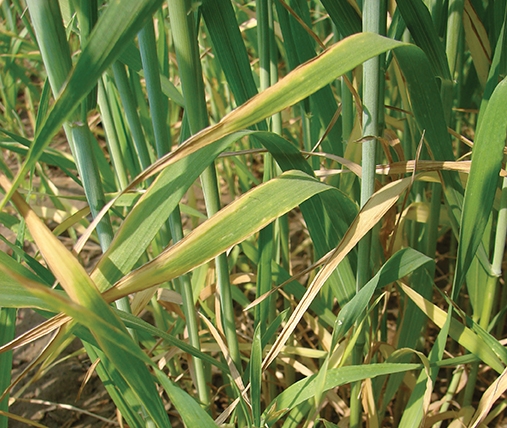
Features
Agronomy
Fertility and Nutrients
Using the right rate
The 4R Nutrient Stewardship principles are defined as using the right source of fertilizer at the right rate, time and place. All four of the Rs are combined, and important, when nutrients are applied as fertilizer on a farm field. However, Right Rate, is especially critical for the full benefit of a fertilizer application. Rate is a threshold requirement, where if the threshold rate is not reached, other 4R factors of source, time and place will not be able to compensate.
Most crops have a concentration range for each required nutrient, and if a specific nutrient concentration within the plant is within that range there shouldn’t be any growth or yield limitation observed.
However if the nutrient concentration is too low in the crop plant tissues, nutrient deficiency symptoms and decreased yields can result. For example, Table 1 shows the nutrient sufficiency range
(% or per cent) for seedling corn.
Too low a rate is often the cause of a specific fertilizer application combination being less effective. A useful example is a field research project I was involved in on a ranch near Invermere, B.C. The ranch owner mentioned to his local fertilizer retail dealer that he thought from visual observation the annual fertilizer applied on a mixed alfalfa-grass hay field (25 per cent alfalfa and 75 per cent forage grass) wasn’t very effective. The regular early spring broadcast application was a 40 lb N, 30 lb P2O5, 40 lb K2O, and 15 lb S/A.
After conducting a small plot research experiment, it was determined the rate of nitrogen (N) was too low to maximize forage growth and yield, and effectively utilize the other nutrients being added. It was recommended to increase N applications up to 70 lb N/A and keep the other nutrient application rates the same. Too low a N rate was limiting crop response, even though the forms, timing and placement of fertilizer was appropriate. The effect of using too low a rate on crop yields can be delayed, and by the time it is observed, there may have already been considerable economic loss.
This is especially true for phosphorus (P) and potassium (K) fertilization, as both of these nutrients are best managed in the longer-term by maintaining plant available levels where crop yield is optimized. In contrast, reducing N rates excessively on a cereal crop will usually result in severe yield loss within one year. Suboptimal rates of P and K, less than crop removal, result in a gradual draw down of plant available soil levels. Reducing nutrient application rates below crop needs will eventually cause crop yields to decline.
Determining the Right Rate of various nutrients to be applied is vitally important to the success of a nutrient management program. I’m not suggesting that you can forget about applying an effective form of fertilizer, or not applying the fertilizer at the appropriate time or placement to get the needed nutrients to a crop. But too low a rate can result in a low yielding crop, even if all other crop fertilizer and agronomic practices are properly conducted.
Dr. Thomas L. Jensen is director, Northern Great Plains, International Plant Nutrition Institute (IPNI). He can be reached at 306-652-3535 or by email at tjensen@ipni.net. Reprinted with permission from IPNI Plant Nutrition Today, Winter 2014/15, No. 1.
April 13, 2015 By Dr. Tom Jensen
 Potassium deficiency in wheat. The 4R Nutrient Stewardship principles are defined as using the right source of fertilizer at the right rate
Potassium deficiency in wheat. The 4R Nutrient Stewardship principles are defined as using the right source of fertilizer at the right rate